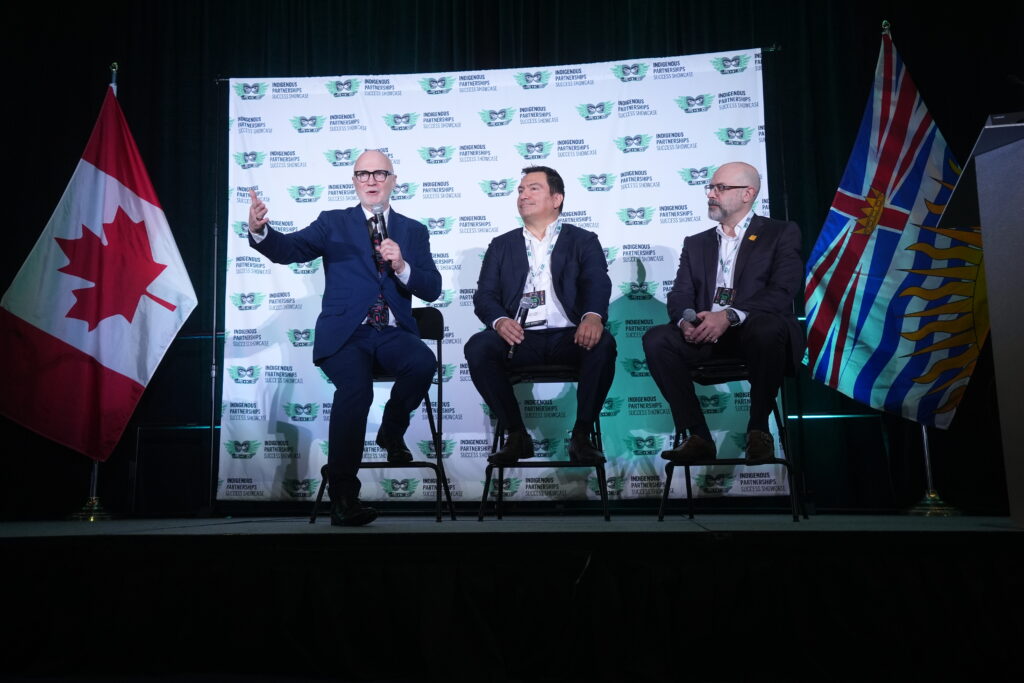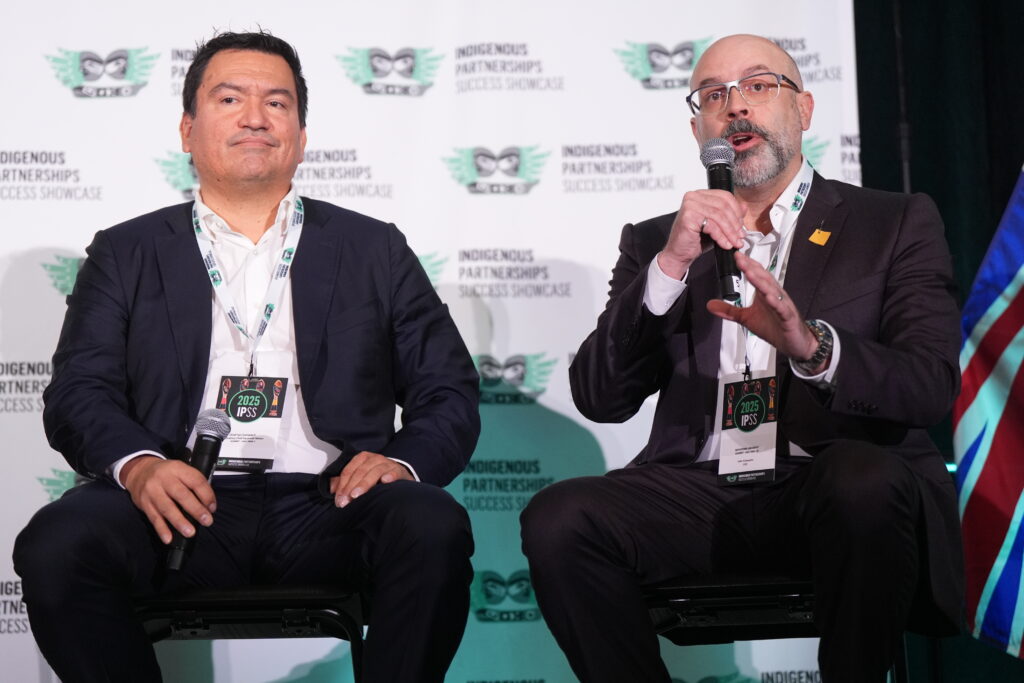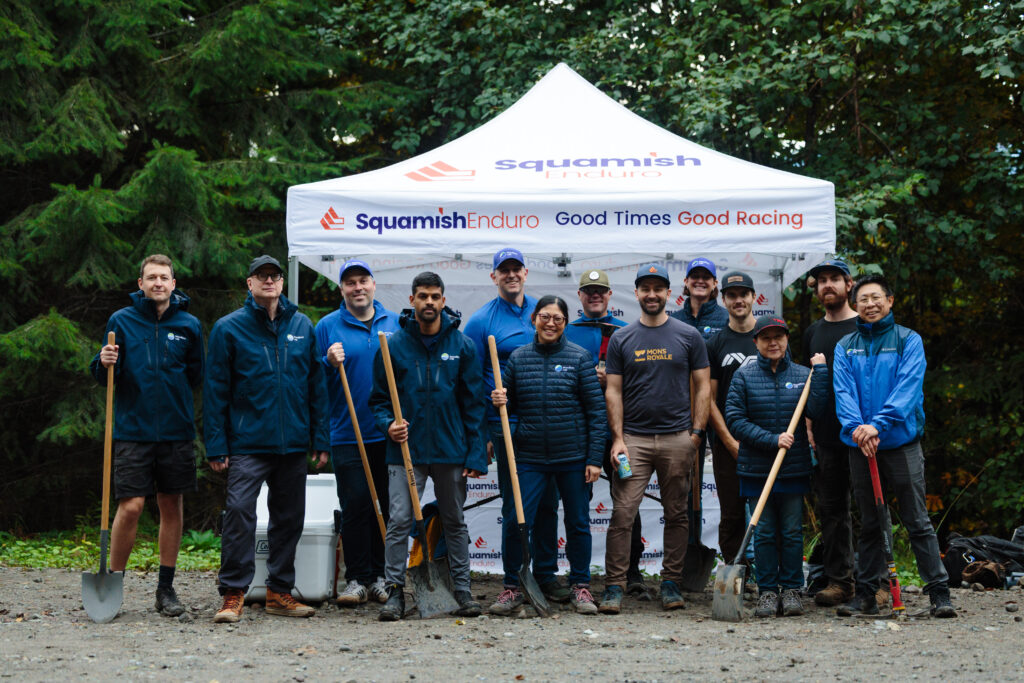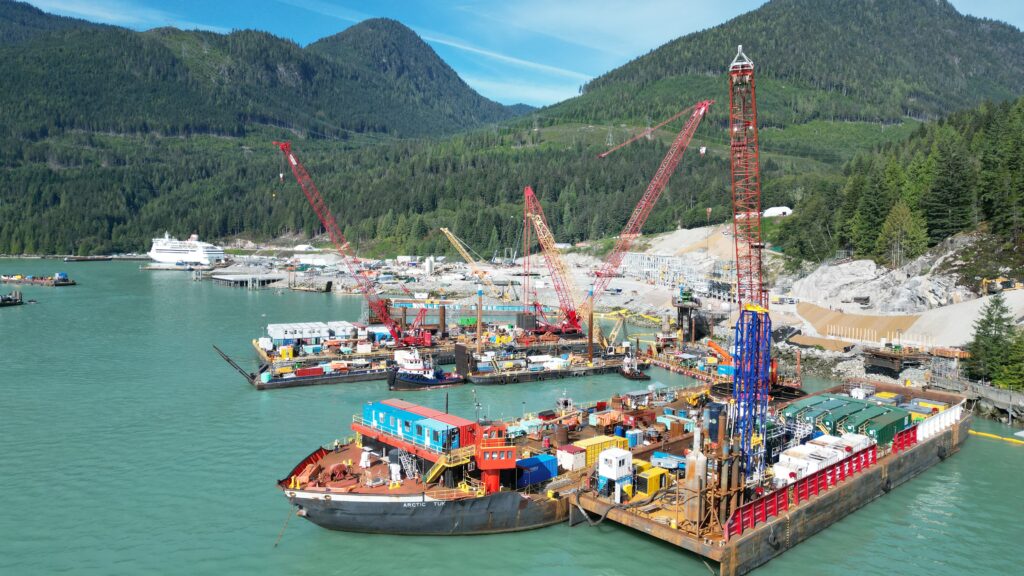News & Insights
Indigenous Partnership Success Showcase: Woodfibre LNG & Squamish Nation Highlight a New Model for Canadian Energy
Nov 21, 2025
The Indigenous Partnerships Success Showcase (IPSS) has become one of the country’s premier gatherings for leaders working at the intersection of Indigenous governance, major project development, and shared economic opportunity. Now celebrating its fifth year, IPSS continues to earn national recognition for spotlighting real-world examples of Indigenous–industry collaboration—drawing participation from Indigenous communities, government, industry, and academia from across Canada. This year’s program featured a standout discussion, Canadian LNG on the Global Stage: How Indigenous Collaboration Sets BC Apart, centred on the Sḵwx̱wú7mesh Úxwumixw (Squamish Nation)–Woodfibre LNG partnership. The discussion, featuring Woodfibre LNG CEO Luke Schauerte and Squamish Nation Hereditary Chief Ian Campbell (Sekyu Siyam) was moderated by Stewart Muir, CEO, Resource Works Society.

Relationship First: The Start of Everything
From the outset of the project, both the Squamish Nation, and Woodfibre LNG leadership emphasized one central theme: lasting success in Canadian resource development depends on building real relationships – long before any construction begins.
For Woodfibre LNG and the Squamish Nation, that principle isn’t aspirational. It is the bedrock on which the entire project rests. “It’s been a deep learning experience for both sides,” said Luke. “It’s imperative that you go into deep listening. When we both go into deep listening, we can build relationships, deep understanding and you start to build trust.”
Establishing a Path Forward
A defining feature of the partnership is the Squamish Nation’s dual role as both regulator and partner. Through a consent-based Environmental Assessment Agreement, the Nation exercises regulatory authority alongside the BC Environmental Assessment Office – embedding Nation values, stewardship principles, and decision-making power directly into the project.
“As we grow together, we are seeing how we can work through challenges together because we have a framework we have agreed to work within. It’s been a growth path,” said Luke.
This shared governance model has strengthened environmental oversight, fostered deeper trust, and set a new benchmark for integrating Indigenous governance within major project development.

Collaboration That Makes the Project Better
As a key member of the Squamish Nation’s leadership at the beginning of the project, Chief Ian described how the early shift from negotiation to shared purpose became a catalyst for collaborative initiatives that have shaped the project in meaningful ways.
A notable example is the Gender Safety Committee, made up of Indigenous and non-Indigenous women and chaired by Squamish Nation matriarch Gwen Harry. Woodfibre LNG is the first industrial project in BC to implement a formal gender safety plan, with more than 5,000 workers having now completed cultural and gender safety training developed through the committee’s guidance. Another flagship initiative is the Marine Mammal Monitoring Program, which brings together Squamish Nation traditional knowledge and hydroacoustic technology. The result is one of the most robust monitoring frameworks in the world – an authentic pairing of Indigenous and western science.
Building True Partnerships
The LNG sector has had to evolve, with Chief Ian noting that “we’re now maturing as a society in Canada. To embrace this notion of ‘us’ really underscores the vision that we are stronger together.”
True partnership requires sharing authority, co-developing solutions, and taking Indigenous priorities seriously. This shift has led to clearer accountability, stronger environmental outcomes, and a collaborative decision-making process that is fundamentally different from conventional project approvals.
Where Relationship-First Development Leads
The discussion at IPSS made one point unmistakable: the Woodfibre LNG–Squamish Nation partnership is a blueprint for how major projects across Canada can be built – with shared authority, shared accountability, and shared benefits.
As Luke summarized: “When you build a relationship first, you set the foundation for everything else to follow.”
Chief Ian expressed his hope that a decade from now, the project will stand as a model for how things should be done – advancing Indigenous regulation, participation, and ownership across the energy sector.
Luke shared a complementary vision: that partnerships like this will no longer be novel, but standard – and that a member of the Squamish Nation one day sits in the executive chair at Woodfibre LNG.



